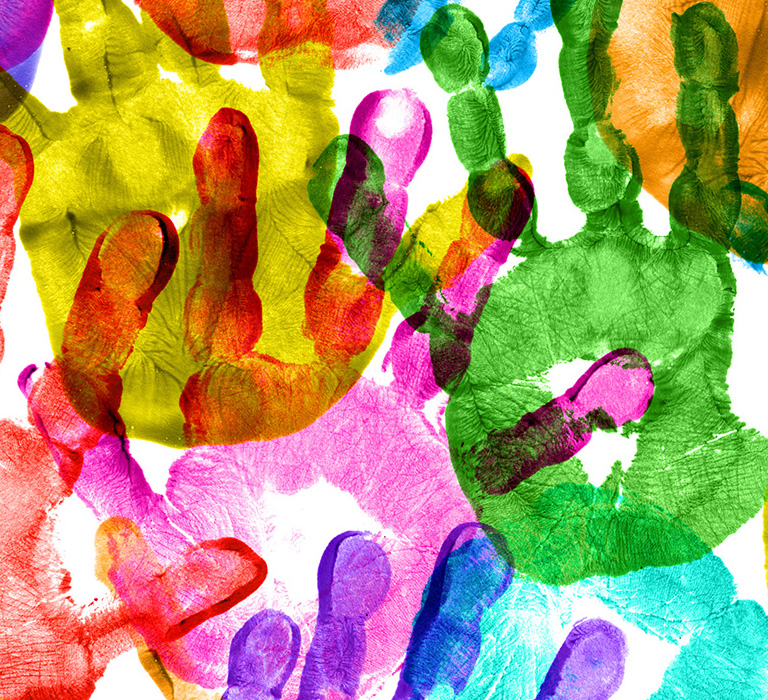

Once you see EB, you never forget.
- Epidermolysis bullosa (EB) is one of those rare diseases that you may not ever see in clinical practice. But when you do, it leaves a lasting impact. The people living with this devastating skin disease are among the bravest.
- EB is a group of genetic disorders that are rare, heterogenous, and debilitating. Patients with EB experience painful blistering of their fragile skin in response to even minor trauma or friction.
- They live each day with significant pain, intense itch, and agonizing & frequent wound dressing changes.
Patients with the most severe forms of EB may experience1:
- Severe, chronic blistering
- Ulceration and scarring of the skin, with extensive scarring of the hands and feet
- Joint contractures
- Strictures of the esophagus and mucous membranes
- High risk of developing aggressive squamous cell carcinomas and infections
- Risk of premature death
1. Fine JD. Orphanet Journal of Rare Diseases 2010, 5:12.

EB Info
- Epidermolysis bullosa (EB) is a rare, inherited, and debilitating skin condition with a devastating effect, causing lifelong disability, pain, and sometimes death. This complex group of diseases affects the integrity of epithelial tissues.
- In patients living with EB, the slightest touch can cause painful tearing and blistering of the skin. In severe cases, blistering can occur all over the body and on internal organs.
Learn more about EB by clicking the categories below.
- Epidermylosis Bullosa (EB) is characterized by skin structural fragility , causing blistering or erosions in response to minor trauma or friction.
- EB is characterized by cutaneous and extracutaneous manifestations and can potentially affect all mucus membranes and any organ lined with epithelium. The cutaneous and extracutaneous manifestations of EB can cause serious complications.
- Widespread blistering can make the skin vulnerable to infections, contractures and extensive scarring.
- The estimated incidence of EB is 1:20,000, which implies that there are as many as 30,000 affected individuals in the United States.1
- EB is panethnic, with no gender predilection.
- EB is categorized into one of four major classical EB types: EB simplex (EBS), junctional EB (JEB), dystrophic EB (DEB) which can be dominant (DDEB) or recessive dystrophic (RDEB), and Kindler EB (KEB). Learn more about EB disease types in the section below.
4 Types of Epidermolysis Bullosa (EB)
In EB, fragility of the skin ranges based on disease type, with initial classification based on the layer of skin in which blisters develop.2 Here we show the forms ranging from most severe to most common.
Junctional EB (JEB)
- Most severe form of EB
- Skin cleavage occurs through the lamina lucida
- Characterized by severe blistering all over the body
- Often fatal in early childhood
- Autosomal recessive inheritance
Dystrophic EB (DEB) including Dominant DEB (DDEB) and Recessive DEB (RDEB)
- Severe form of EB
- Skin cleavage occurs below the lamina densa (sublamina densa)
- Characterized by blistering followed by scarring
- Fusion of fingers and toes and risk of skin cancer in severe recessive subtype
- Inherited in a dominant or recessive manner with some phenotypic overlap
Kindler EB (KEB)
- Rare form of EB
- Within the basal keratinocytes, at the level of the lamina lucida or below the lamina densa
- Pathogenic mutations base in the gene for kindlin-1, an intracellular protein of focal adhesions
EB Simplex (EBS)
- Most common form of EB
- Within the intra-epidermal layers
- Mildest subtypes may be undiagnosed
- Autosomal dominant or recessive inheritance
1.Bruckner-Tuderman L, et al. J Invest Dermatol 2013:133, 2121-2126; doi:10.1038/jid.2013.127.
2. Orpha.net. Inherited epidermolysis bullosa. Available at: https://www.orpha.net/consor/www/cgi-bin/OC_Exp.php?lng=EN&Expert=79361. Accessed 08.08.21.
2. Orpha.net. Inherited epidermolysis bullosa. Available at: https://www.orpha.net/consor/www/cgi-bin/OC_Exp.php?lng=EN&Expert=79361. Accessed 08.08.21.

Diagnosing EB1
Epidermolysis bullosa (EB) may be diagnosed and subclassified by the collective findings obtained through clinical observation, detailed personal and family history, along with results of laboratory testing, and in some cases, DNA analysis.
Clinical Diagnosis
- Skin blistering (superficial or profound, generalized or localized, depending on subtype)
- Nail fragility
- Contractures, strictures and dental involvement in certain subtypes
- Other organ involvement, particularly in RDEB
Laboratory Diagnosis
- Skin biopsy for immunohistochemistry (IHC) with fluorescence-labelled secondary antibodies (IFM)
- Examination of skin ultrastructure using transmission electron microscopy (TEM)
- Provides rapid diagnostic turnaround
Genetic Testing
- Dependent on available resources
- Can take longer than IHC and TEM
IFM, immunofluorescence mapping; IHC, immunohistochemistry; TEM, transmission electron microscopy
1.Has C, et al. Br J Dermatol 2020;183:614
1.Has C, et al. Br J Dermatol 2020;183:614

Managing EB
- Currently there is no cure or approved therapy for epidermolysis bullosa (EB). Today, treatment focuses on wound and pain management and prevention of new injury.
- The optimal management of patients living with EB requires a multidisciplinary approach, primarily revolving around protecting susceptible tissues against trauma, using sophisticated wound care dressings, providing aggressive nutritional support, and enlisting early medical or surgical interventions to correct the extracutaneous complications, whenever possible.1
- There is a clear, unmet need for effective medical therapies for patients living with EB; their wounds cause pain and severe itching, and those with severe types of EB experience significant morbidity and mortality.
1. Orpha.net. Inherited epidermolysis bullosa. Available at: https://www.orpha.net/consor/www/cgi-bin/OC_Exp.php?lng=EN&Expert=79361. Accessed 08.08.21.
Sign Up to Stay Informed
Get the latest news and information relating to epidermolysis bullosa (EB).
SIGN UP NOW Please complete the form below.